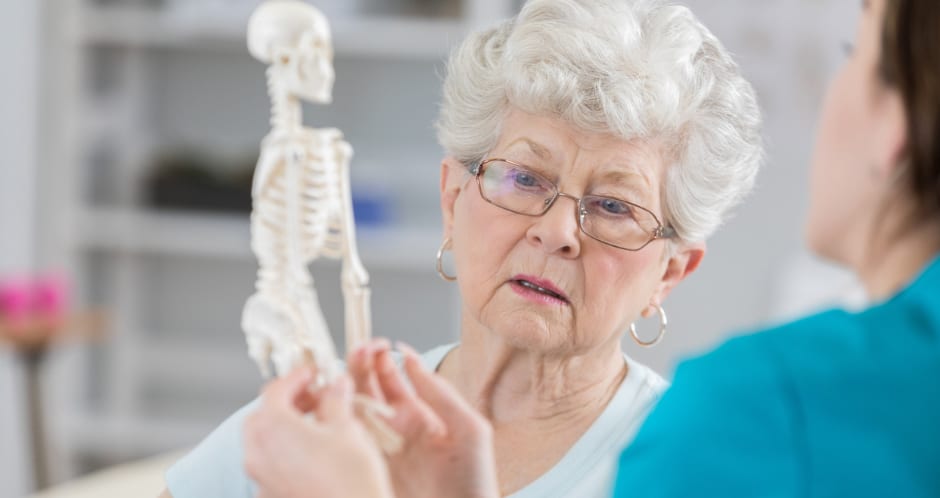
Osteoporosis affect more than one million people across Australia.
Osteoporosis is a condition where a person’s bones become weak and brittle, often resulting in an increased risk of breaks and fractures.
Healthy bones are made up of minerals – calcium being the one people are more familiar with. And when the body loses calcium faster than they are able to replace them with, it causes the bones to lose mass or density.
Any bone can be affected by osteoporosis, but the most common sites are the hip, spine and wrist.
There are also a number of factors that increase a person’s chance of developing osteoporosis.
This may include a family history of osteoporosis, low levels of Calcium and Vitamin D, lifestyle factors, such as alcohol consumption, smoking and lack of physical activity.
There are also other medical conditions that can lead to a higher risk of developing osteoporosis:
It’s even recommended that anyone over 50 with risk factors should ask their doctor about getting a bone density scan.
Aged Care Minister Ken Wyatt is urging Australians of all ages to complete a simple, online bone health check, to prevent potentially crippling conditions as they grow older.
“This year’s World Osteoporosis Day (October 20) theme was ‘Love Your Bones’, a timely reminder of the importance of prevention, with estimates that more than one million Australians may already be suffering from osteoporosis,” Minister Wyatt said.
“Early diagnosis and treatment of this chronic condition is the best way to reduce the chance of serious fractures and the broader impacts of broken bones in later years.”
“Research shows older people with hip fractures are over three and a half times more likely to die within 12 months than their non-injured counterparts.”
Speaking at the Osteoporosis Australia Roundtable in Canberra Minister Wyatt said three-quarters of people with the condition were women.
“About one million older Australians have at least one fall each year and about 40–60 per cent will sustain major injuries including broken bones,” he said.
“What we know as the ‘fall cascade’ is a significant issue for people with osteoporosis, because once they have had one fall, there is a very great likelihood they will have another fall with the next 12 months.”
In recognition of this, the Government recently provided funding to Osteoporosis Australia for a pilot study to investigate re-fracture prevention and develop a best practice model for a sustainable, integrated and national re-fracture prevention program.
“All measures with the potential to enhance people’s quality of life while reducing the human and health care costs of osteoporosis are welcomed,” Minister Wyatt said.
The Government also funds the National Health and Medical Research Council (NHMRC) for research into osteoporosis and a range of arthritis and musculoskeletal conditions.
Between 2000 and 2016 more than $334 million was allocated by the NHMRC for research into these chronic conditions, including $107 million expended on osteoporosis research.
To take the online test, go to the know your bones website.
What do you have to say? Comment, share and like below.